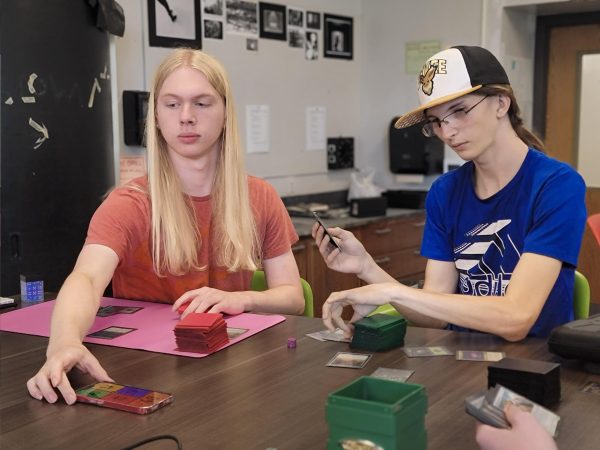The Mystery of Yawning
In a classroom, when one student begins to yawn it triggers a chain reaction. Then, the person sitting next to them yawns, and the person next to them yawns as well. The cycle continues until everyone in the room is yawning, including the teacher. “Watch someone yawn, and try not to yawn yourself. It can be impossible to resist. Even reading about yawning can make you do it,” said Emily Sohn from Discovery News (http://news.discovery.com).
During school, seeing students yawn is common for teachers. “I see yawning. I see students who need to put their head down for awhile. Mostly first block and sixth block are the classes where I see students exhibiting tired behavior,” Cindy Haidu-Banks, a U.S. history teacher at Community High School, said.
Most students believe that they yawn from fatigue, boredom, or lack of interest in what they are learning in class. “I think it’s just lack of sleep and kind of a boring atmosphere where you’re not being made to do a lot of activities at once or pay attention,” said Ella Ruderman, a sophomore at Community High school. If students are doing an activity that requires more attention and focus, then they may not show as much tired behavior. “If you’re doing lectures then you start thinking about other things and how tired you are, then I think that makes it more likely for you to yawn,” Ruderman said.
Many teachers see yawning and they do not immediately blame it on the material they are teaching. “Some days I think I have a really exciting lesson and the response is kind of flat,” Haidu-Banks said. “Then there are other days where I think the lesson may not be as dynamic and the students really get into it. I try to change my lesson plans, so that I’m not keeping it all in one mode of learning.”
Yawning can be considered impolite in some cases when teachers or students are presenting information to others, but not all teachers feel that way. “I don’t think of it as being rude,” Haidu-Banks said. “I’ll let a student put their head down for a few minutes because sometimes I need a couple of minutes of quiet time so that I can rejuvenate myself to get back into being in the moment.”
“When I see yawns, [I figure it might be] a kid that’s doing sports or that is really tired,” Laurel Landrum, a Spanish teacher at Community High School, said. “But sometimes I can tell that kids are bored, and I guess I consider that my fault. I don’t think it’s rude, I think it’s more of a reflex.”
Yawning as a reflex is one of the physiological hypotheses for yawning called Fixed Action Pattern. “[This is a] sequence of behavioral acts triggered by a ‘releasing’ stimulus that is unchangeable and usually carried to completion one initiated,” Claudia Aguirre said in a TED Talk (http://ed.ted.com). In simpler terms, this means that yawning is an instinct that is almost impossible to stop once it’s started.
Another physiological hypothesis that answers why people yawn so often, and why yawns are contagious, is called Nonconscious Mimicry, or the ‘Chameleon Effect.’ “[This occurs] when you imitate someone’s behavior without knowing it, subtle and unintentional copycat maneuver,” Aguirre said (http://ed.ted.com). Nonconscious Mimicry happens because of mirror neurons in the brain that allow a person to perform an action while observing another person perform that same action. For example, when one person yawns, the person sitting next to them yawns as well because their mirror neurons allow them to copy another person’s actions.
The last scientific hypothesis for yawning is a psychological hypothesis: empathy. “The feeling that you understand and share another person’s experiences and emotions: the ability to share someone else’s feelings,” (http://www.merriam-webster.com). Humans experience empathic yawning at as young as four years old when children realize how to understand other people’s emotions properly. This is when mirror neurons allow a person to empathize with someone else at a deeper level, by yawning in response to someone else’s yawn.
Scientists are still testing the theory of contagious yawning. Some teachers and students are skeptical of this hypothesis. “I don’t know I used to do that when I was younger,” Landrum said. “I used to yawn and see if other people yawned and it worked, so maybe.”
“I think if you’re watching someone yawn then yes, it’s contagious,” Ruderman said. “If you’re not paying attention then probably not.”









